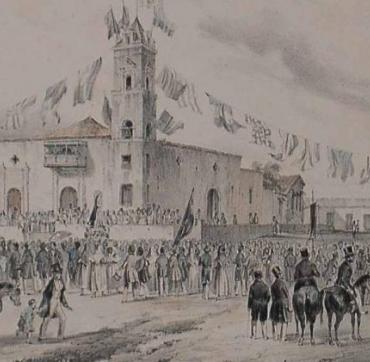Ernesto Parra, helping transform the world with a clown nose
especiales

For years now, the art of clowning in Cuba has had a vital name: Ernesto Parra. With his group Teatro Tuyo, he has created a paradigm of good work from Las Tunas. He has taught and, literally, created the National School of Clown, where he trains new talents since 2019.
Parra is Papote, his clown, but beyond the red clown nose, he is an actor, teacher, researcher, writer, passionate about theater and, in particular, clowning, and he takes it very seriously. For him, this specialty must be embraced without falling into “the signs and simplicity that pigeonhole this character. Chaplin is perhaps the greatest exponent because he managed to take Charlot to a very wide dimension of different situations. Just as we all have a personality that is defined over the years and mutates, the clown actor evolves as well. Darío Fo said: a clown is nothing more than a total actor.”
If you want to become a good clown, he states: “the first thing is to be an actor. Contrary to what is believed, that if you are a bad actor and have comedic skills, you can dedicate to clowning. But it is quite the opposite, to be a good clown, you need to be a good actor and have the skill to transmit emotions and transform a fictional event into a truth.”
23 years after its foundation, Teatro Tuyo has proven effective in this regard, but its leader feels there is a lot way to go yet, because “in any career and in life itself, continuity is what measures future results. Only to the extent that each artist develops that appetite to learn, that theater becomes that experience of praxis of life, in a way of doing things, that is actually what continuity stands for.”
And he points out, of course, that the National School of Clown is the clearest materialization of that effort, a teaching space that feeds, first of all, from our tradition, in which the best known character is, without a doubt, Trompoloco: “Edwin Fernández, an actor with a histrionic ability and a very wide range of trades that go from the cinema, the radio, television, the circus, the cabaret, dubbing... He is not the only one. There was an exceptional generation of clown along with him, especially in the world of circus. Before Edwin, the great clown Rafael Padilla, still ignored in the history of Cuban theater, the first black clown in the world, Monsieur Chocolat, a child born as a slave who was sold by his owners and who began to succeed in France in the world of circus.
“There are Latin American maestros, especially in Argentina, who have left a legacy in written articles and books; for instance, Hernan Genet, Cristina Moreira, and Manuel Canzon. In a much broader framework, in the particular case of the former Soviet Union, maestros such as Oleg Popov, Yuri Nikulin, Karandash (Mijail Nikolaievich Rumianstsev)”, Parra notes in relation to other referents of our School.
When I asked him to assess the health of clown in Cuba, Parra is optimistic: “Using an analogy from agriculture: we are at a time when the first seeds sown begin to turn into seedlings. As long as we continue to take care of them and they also aim at growing and become trees, we can have a very promising harvest.
“What we have done during all these years in Teatro Tuyo also foster the academic dimension to multiply that very particular experience of the group, which is knowledge treasured from maestros who have preceded us in the history of the clown in Cuba or elsewhere. We aim to share it through what is already a fact: The National School of Clown. Go promoting from the academic training those seeds who will become creators in the future.”
But Ernesto Parra is not only making the history of clowning with his own hands; he is also writing it. Recently, he launched his digital book Clownteo, which tells “how a rocket loaded with clowns took off from Las Tunas. There are four chapters, and they are ordered from end to beginning as if countdown. From press articles, specialized criticism, teratological reflections, opinions of colleagues, the history of Teatro Tuyo is compiled. There is also a chronology, technical sheets, an image gallery...
“There is also a chapter in which I try to explain for Teatro Tuyo what a clown is, and another in which I explain who Ernesto Parra is: someone from Las Tunas who aims to prove that any place is good to grow. I only believe in the vocation of getting up from bed every day to transform reality and, in my case, I have to do it with a clown nose.”
Translated by Sergio A. Paneque Díaz / CubaSí Translation Staff














Add new comment